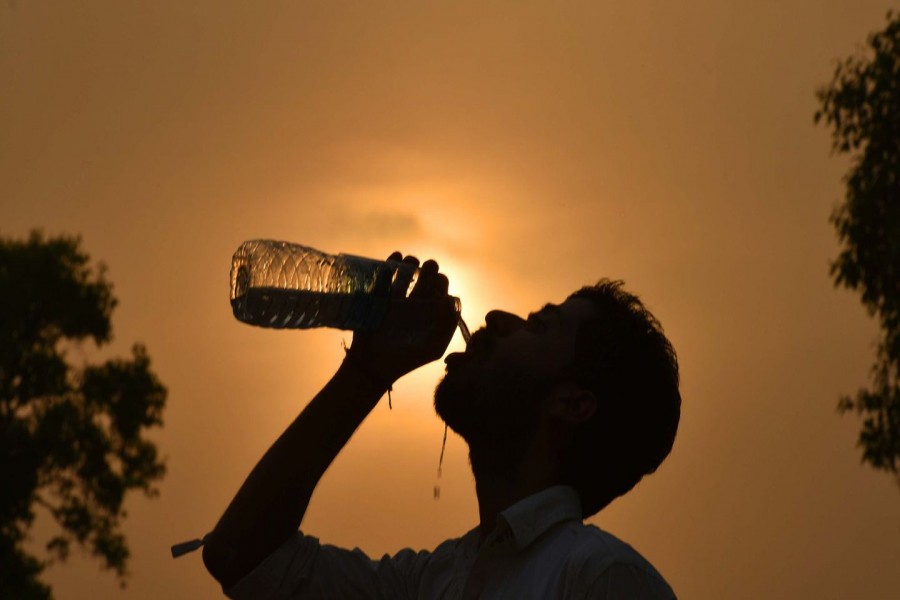According to a new study, as climate change drives heat and humidity to new extremes, venturing outdoors may become deadly across the wide swathes of Bangladesh, India and Pakistan later in the century. Unless the global community ramps up efforts to rein in climate-warming carbon emissions, these conditions could affect up to a third of the people living throughout the Indo-Gangetic Plain. That vast region is home to more than 1.5 billion people today.
The authors of the study, led by former MIT research scientist Eun-Soon Im, now an Assistant Professor at the Hong Kong University of Science and Technology wrote that the most intense hazard from future extreme heat waves is concentrated around the densely populated agricultural regions of the Ganges and Indus river basins. While most of the climate studies have been based on temperature projections, this one - published in the journal Science Advances - is somewhat unique in considering humidity as well as the body's ability to cool down in response. Those factors together make up what is called a "wet-bulb temperature," which is the air temperature taken when a wet cloth is wrapped around the thermometer. It is always lower than the dry-bulb temperature - how much so depends on the humidity. It can help estimate how easy it is for water to evaporate. It can also offer a gauge for where climate change might become dangerous for human beings.
The scientists say that humans can survive up to a wet-bulb temperature of about 35 degrees Celsius (95 degrees Fahrenheit), beyond which the human body has difficulty sweating to cool down, or sweat doesn't evaporate. This leads to heat stroke and ultimately death within just a few hours - even in shaded, ventilated conditions. So far, wet bulb temperatures have rarely exceeded 31 degrees Celsius (88-90 degrees Fahrenheit), a level that is already considered extremely hazardous. A Stanford University climate scientist Chris Field, who was not involved with the study, said that it is hard to imagine conditions that are too hot for people to survive for more than a few minutes. But that is exactly what is being discussed in this paper. And of course, the danger threshold for punishing heat and humidity is lower for people who are ill or elderly.
Most of those at risk in Bangladesh, India and Pakistan are poor farm workers or outdoor construction labourers. They are unlikely to have air conditioners - up to 25 per cent of India's population still has no access to electricity. In some areas that have been deforested for industry or agriculture or urbanisation, they may not even have very much shade. Both scenarios play out dangerously for South Asia. But with no limit to global warming due to climate change, about 30 per cent of the region could see dangerous wet bulb temperatures above 31 degrees Celsius (88 degrees Fahrenheit) on a regular basis within just a few decades. That is nearly half a billion people by today's population levels, though the full scale could change as the population grows gradually. Meanwhile, 4.0 per cent of the population - or 60 million in today's population - would face deadly highs at or above 35 degrees Celsius (95 degrees Fahrenheit) by 2100. But that risk exposure may decline drastically if all countries can limit global warming. About 2.0 per cent of the population would face average wet bulb temperatures of 31 degrees Celsius (88 degrees Fahrenheit) or higher.
To limit average global warming to 2.0 degrees Celsius (3.6 degrees Fahrenheit), especially since the world has already warmed by 1.0 degree Celsius (1.8 degrees Fahrenheit), countries must work towards meeting the Paris climate agreement goals. That average will play out differently across the planet. And South Asia is expected to be hit harder than other regions. A climatologist Omid Mazdiyasni of the University of California, who was not involved with the study, said that it is important to base heat mitigation strategies on not only temperature extremes, but rather the compound effects of extreme temperatures and humidity. The impacts of wet bulb temperatures are far greater than temperature alone. A heat wave across India and Pakistan killed 3,500 people as recently as 2015. After recording 13 of the country's hottest 15 years on record since 2002, India's disaster management officials recently crafted guidelines for cities and states to create heat action plans.
The writer is a retired Professor of Economics, BCS General Education Cadre.


